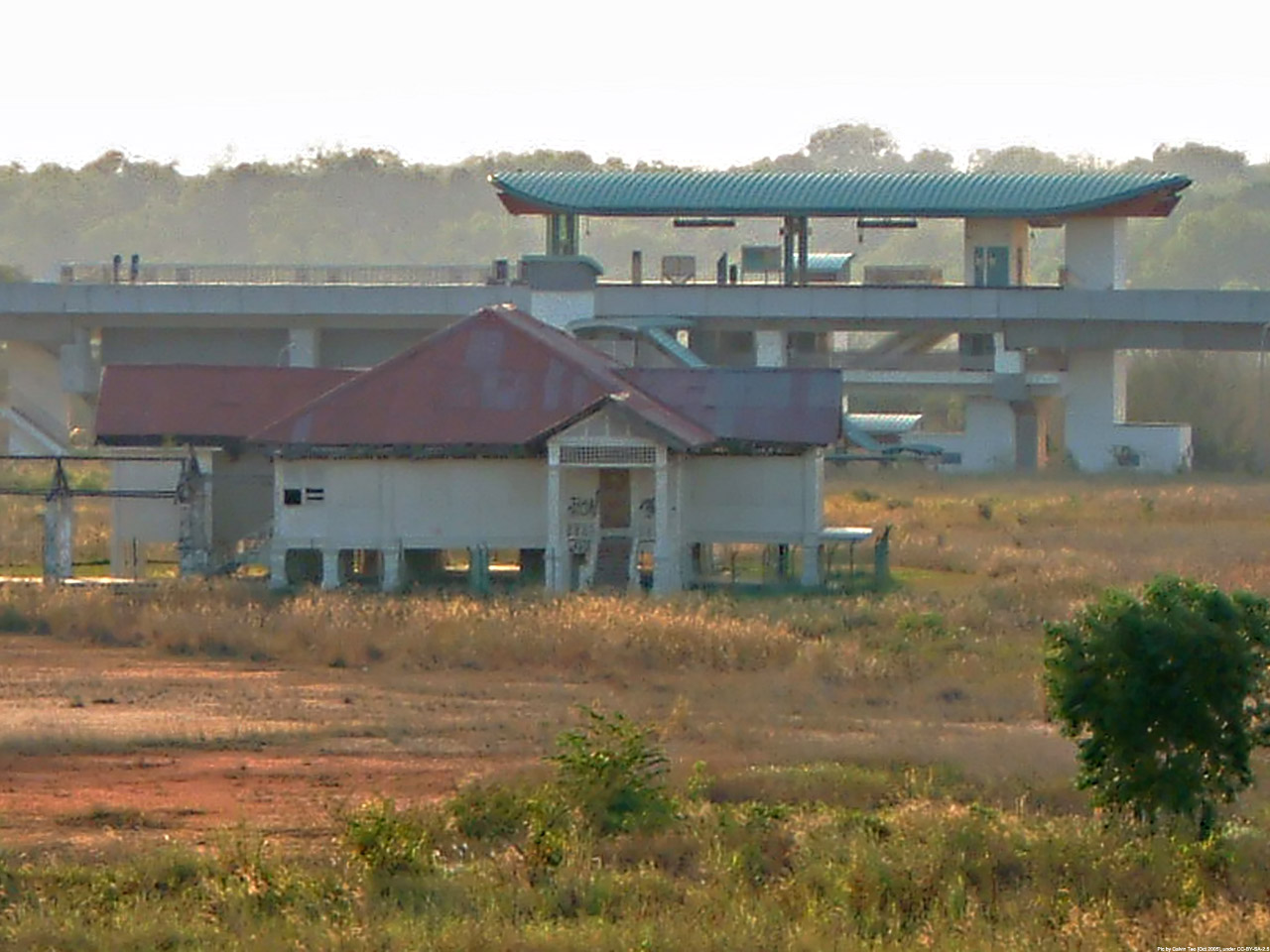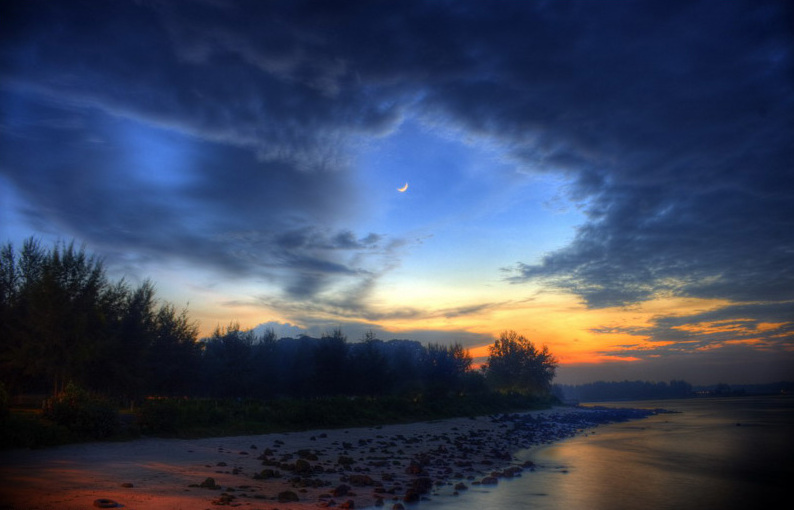|
Sungei Punggol
Sungei Punggol (Malay for Punggol River; Chinese: 榜鵝河; Pinyin: Bǎng'é Hé) is a river located within the North-East Region in Singapore. Geography Other than Punggol New Town, the river flows through 7 other towns in the late 1990s and early 2000s, much of the river banks along Sungei Punggol have since been reclaimed and the river canalised. Since 2011, it is now part of the Punggol Reservoir. In addition, Kampong Tongkang Pecah was along Sungei Punggol as well. Developments To better serve the recreational needs of the residents of Sengkang New Town, a network of green connectors have been built along the banks of Sungei Punggol. These connectors link the housing precincts to neighbourhood parks, the town park and Sengkang Sports Centre in the new town. These park connectors are also linked to the Coney Island Park in Punggol New Town and the existing Punggol Park in Hougang. An artificial man-made floating island has been constructed in the middle of the river in ... [...More Info...] [...Related Items...] OR: [Wikipedia] [Google] [Baidu] |
Punggol Park
Punggol Park (Chinese: 榜鹅公园) is a park located in Hougang, in the north-eastern part of Singapore. The park is in size, with a lake. Kite flying is not allowed here due to the proximity of Paya Lebar Air Base. The park has two distinctive zones: the "Southern Active Zone" where the features for major activities are provided, and the densely forested area in the north of the lake which forms the "Passive Zone". The plan for a park at Hougang was announced in November 1992. The park was named Punggol Park, and the junction of Hougang Avenue 8 and Hougang Avenue 10 was chosen as the location. The park is known for its pond and used frequently by schools for their runs. The pond was once quarried for sand to reclaim the many swamps in Hougang, thus resulting in the pond we have today. See also *List of parks in Singapore There are numerous parks throughout the sovereign island country of Singapore. This is a list of parks in Singapore that are currently existing an ... [...More Info...] [...Related Items...] OR: [Wikipedia] [Google] [Baidu] |
Seletar
Seletar is an area located in the north-east of Singapore. Its name can also refer to the Seletar Planning Area (as defined by the Urban Redevelopment Authority), situated in the North-East Region of Singapore. The place name was derived from the Malay subgroup who were indigenous to the area, the ''Orang Seletar''. It shares boundaries with the planning areas of Sengkang to the south, Punggol to the east, Yishun and Simpang to the west, as well as the Straits of Johor to the north. Formerly Royal Air Force Station Seletar Royal Air Force military airfield site, the area now houses a new S$60 million Seletar Aerospace Park that spans 140 hectares. The aerospace park houses industries specialising in aircraft maintenance and repair services. There are future plans to transform Seletar into one of the Singapore's regional centres, along with Jurong East, Tampines and Woodlands. Once the transformation is complete, Seletar will be known as the only regional centre without a s ... [...More Info...] [...Related Items...] OR: [Wikipedia] [Google] [Baidu] |
Punggol
Punggol, alternatively spelled as Ponggol, is a Planning Areas of Singapore, planning area and New towns of Singapore, new town situated on the Tanjong Punggol peninsula in the North-East Region, Singapore, North-East Region of Singapore. The town directly borders Sengkang to the south and shares riverine boundaries with the planning area of Seletar to the west and Pasir Ris to the east. Bounding the town to the north and north-east is the Straits of Johor, with Coney Island, Punggol, Coney Island included as a part of the Punggol planning area. Under the Punggol 21 initiative, plans to turn the area into a new residential town were announced in 1996 and development of the town started in 1998. Due to the Asian financial crisis in 1997 and the financial troubles within the construction industry in 2003, the plan did not fully materialise. In 2007, a new initiative, the Punggol 21-plus plan, was introduced to redevelop the area into a waterfront town. Punggol is divided into 11 d ... [...More Info...] [...Related Items...] OR: [Wikipedia] [Google] [Baidu] |
Hougang
Hougang is a planning area and mature residential town located in the North-East Region of Singapore. The town is the most populous in the region, being home to 247,528 residents as of 2018. Hougang planning area is bordered by Sengkang to the north, Geylang and Serangoon to the south, Bedok to the southeast, Toa Payoh to the southwest, Paya Lebar to the east, Ang Mo Kio to the west and Bishan to the southwest. Subzones Hougang is separated into 10 subzones, Hougang East, Defu Industrial Park, Tai Seng, Lorong Halus, Kangkar, Hougang West, Trafalgar, Lorong Ah soo, Kovan and Hougang Central. Etymology and history ''Hougang'' is the ''pinyin'' version of ''Aū-káng'', a Hokkien and Teochew name meaning "river end", as Hougang is located upstream or at the back of Sungei Serangoon. In the past, the name connoted the area stretching from the fifth milestone junction of Upper Serangoon Road and Upper Paya Lebar Road/Boundary Road to the seventh and a half milestone junction o ... [...More Info...] [...Related Items...] OR: [Wikipedia] [Google] [Baidu] |
Rivers Of Singapore
A river is a natural flowing watercourse, usually freshwater, flowing towards an ocean, sea, lake or another river. In some cases, a river flows into the ground and becomes dry at the end of its course without reaching another body of water. Small rivers can be referred to using names such as creek, brook, rivulet, and rill. There are no official definitions for the generic term river as applied to geographic features, although in some countries or communities a stream is defined by its size. Many names for small rivers are specific to geographic location; examples are "run" in some parts of the United States, "burn" in Scotland and northeast England, and "beck" in northern England. Sometimes a river is defined as being larger than a creek, but not always: the language is vague. Rivers are part of the water cycle. Water generally collects in a river from precipitation through a drainage basin from surface runoff and other sources such as groundwater recharge, springs, a ... [...More Info...] [...Related Items...] OR: [Wikipedia] [Google] [Baidu] |
Sungei Serangoon
Sungei Serangoon (Malay for Serangoon River; Chinese: 实龙岗河) is a river in the north-eastern part of Singapore. The 8-kilometre river starts as a canal near Tampines Road, and flows through Hougang, where it is joined by tributary Sungei Pinang just before Sengkang, before flowing towards Lorong Halus, where it is joined by another tributary Sungei Blukar, before emptying into the Serangoon Harbour. The river is also known as the Serangoon Estuary. Since 2011, the river has been converted into a reservoir - Serangoon Reservoir. Ecology Although sections of the river have been canalized at Hougang and Lorong Halus, wildlife at the river is relatively unaffected. Birds like herons, terns, kingfishers can still be found at the river. The area near Lorong Halus is considered one of the best bird-watching spots in Singapore. Monitor lizards and sometimes otters can also be found near the banks. The stretch of the river near Hougang has a 2.2 km jogging track (known as the ... [...More Info...] [...Related Items...] OR: [Wikipedia] [Google] [Baidu] |
Public Utilities Board
The Public Utilities Board (PUB) is a statutory board under the Ministry of Sustainability and the Environment of the Government of Singapore responsible for ensuring a sustainable and efficient water supply in Singapore. The PUB regulates and oversees the country's entire water supply system, which comprises the water catchment systems, drainage systems, water works, pipeline network, water reclamation plants and sewage systems. In April 2020, PUB was also appointed Singapore's National Coastal Protection Agency. The nation's demand for water is about a day, with homes and non-domestic sectors consumption forming 45% and 55% of the demand respectively, and expected to double by 2060. PUB is set to meet 80% of this demand through its NEWater and desalination technologies. The PUB's watershed management and treatment processes has ensured a continuous supply of clean and quality water for Singaporeans over the last four decades. The nation's clean and drinkable 'tap water' ac ... [...More Info...] [...Related Items...] OR: [Wikipedia] [Google] [Baidu] |
Water Reservoir
A reservoir (; from French ''réservoir'' ) is an enlarged lake behind a dam. Such a dam may be either artificial, built to store fresh water or it may be a natural formation. Reservoirs can be created in a number of ways, including controlling a watercourse that drains an existing body of water, interrupting a watercourse to form an embayment within it, through excavation, or building any number of retaining walls or levees. In other contexts, "reservoirs" may refer to storage spaces for various fluids; they may hold liquids or gasses, including hydrocarbons. ''Tank reservoirs'' store these in ground-level, elevated, or buried tanks. Tank reservoirs for water are also called cisterns. Most underground reservoirs are used to store liquids, principally either water or petroleum. Types Dammed valleys Dammed reservoirs are artificial lakes created and controlled by a dam constructed across a valley, and rely on the natural topography to provide most of the basin of the re ... [...More Info...] [...Related Items...] OR: [Wikipedia] [Google] [Baidu] |
Estuary
An estuary is a partially enclosed coastal body of brackish water with one or more rivers or streams flowing into it, and with a free connection to the open sea. Estuaries form a transition zone between river environments and maritime environments and are an example of an ecotone. Estuaries are subject both to marine influences such as tides, waves, and the influx of saline water, and to fluvial influences such as flows of freshwater and sediment. The mixing of seawater and freshwater provides high levels of nutrients both in the water column and in sediment, making estuaries among the most productive natural habitats in the world. Most existing estuaries formed during the Holocene epoch with the flooding of river-eroded or glacially scoured valleys when the sea level began to rise about 10,000–12,000 years ago. Estuaries are typically classified according to their geomorphological features or to water-circulation patterns. They can have many different names, such as bays, ... [...More Info...] [...Related Items...] OR: [Wikipedia] [Google] [Baidu] |
Sengkang Riverside Park
Sengkang Riverside Park is a riverine park located at Anchorvale Street and Fernvale Street abutting Sungei Punggol, Singapore. The park consist of three open-space land parcels and is also home to a constructed wetland. The Sengkang Sports Centre is located just adjacent to the riverine park, connected by a floating wetland. History The 21-hectare park was opened to the public in November 2008. The park is situated alongside Sungei Punggol. The integration of urban planning and protection of Singapore's water resources has earned Sengkang Riverside Park an ABC Waters Certification. Sengkang Floating Wetland On 7 November 2010, Prime Minister Lee Hsien Loong officially opened the floating wetland that is designed with a "fruitful" theme. The wetland is about half the size of a football field, and connects the Sengkang Riverside Park with the Sengkang Sports Centre. The floating wetland helps to collect and filter rainwater naturally through its aquatic plants. The wetla ... [...More Info...] [...Related Items...] OR: [Wikipedia] [Google] [Baidu] |





